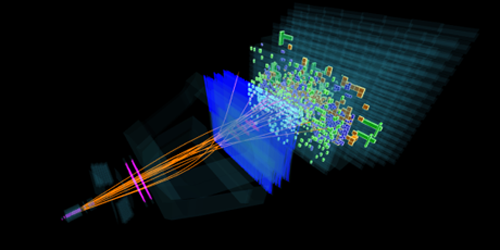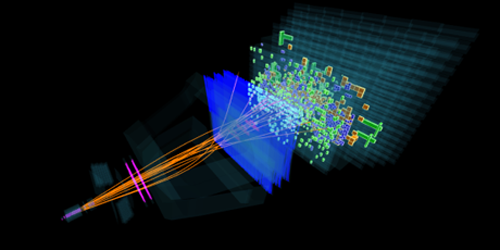Five Charming New Baryons
Even at the most powerful particle accelerator on Earth, the discovery of a new particle is a big deal. Finding five new baryons in one go, as the Large Hadron Collider beauty experiment (LHCb) has done, is truly historical. The result will help researchers refine theories of the strong interaction, which binds quarks together in conventional baryons, like protons and neutrons, and in more exotic ones, like tetraquarks and pentaquarks.
The five new particles are excited states of the Omega-c-zero baryon ( ), which is made up of one charm quark and two strange quarks. After the was discovered in 1994, physicists predicted the existence of its heavier excited states. But the very low production rates of these particles and their complex decay modes made them hard to observe. LHCb succeeded in seeing the states by monitoring the products of their decay: each baryon first decays via the strong force into another baryon called , which then decays via the weak force into a proton, a kaon, and a pion.
Thanks both to the ultrasensitive detectors that are able to distinguish the final products of the decay, and to the accumulation of large datasets from LHC’s first and second runs, LHCb was able to infer the presence of five excited states of . The particles, whose names reflect their masses in MeV, are , , , , and . The collaboration now intends to measure the spin and parity values of each particle. These quantities will help researchers establish whether the five states can fit into the quark model as standard baryons or whether they have a more exotic nature like pentaquarks.
This research is published in Physical Review Letters.
–Matteo Rini
Matteo Rini is the Deputy Editor of Physics.





